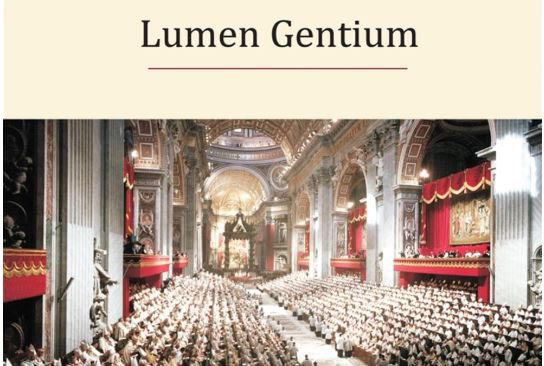We cannot minimize the figure of Fr. Karl Rahner, S.J. in the drafting of this document, either. Knowing that he was an evolutionist, and an existentialist, and a proponent of the "anonymous Christian" theory, we must look for the Rahnerian signature if not always in the texts, then in the possible ways of exegeting it. For Rahner, the distinction between nature and the supernatural is muted if not dissolved. He also sees a radical unity between matter and spirit a la Teilhard de Chardin. This leads to his heterodox theory of the supernatural existential - that all men have divinity at their radical center. Seeing Rahner's theology and thoroughly novel metaphysics signature helps us to understand why LG has destroyed so much of orthodox ecclesiology today.
Finally, taking the above into consideration, we must see how Pope John Paul II interpreted Vatican II in his encyclical Redemptor hominis which claims,
"Entrusting myself fully to the Spirit of truth, therefore, I am entering into the rich inheritance of the recent pontificates. This inheritance has struck deep roots in the awareness of the Church in an utterly new way, quite unknown previously, thanks to the Second Vatican Council..."This new way is contingent upon his doctrine that "by His incarnation Christ has united Himself to each man" (GS #22) - "united to each man forever, and each man is a sharer in the mystery of the redemption (RH)." John Paul II obviously sees in the Council a permission to boldly thrust forward Rahner's (and DeLubac's) theory of each man having the divine life of supernatural grace within. In light of this doctrine, LG is quite easy to exploit as a vehicle for teaching a conflation between the Church and all humanity. And this very thing the neoModernists do, some more covertly than others, but always advocating Teilhard's Cosmic Christ and the advance of a [fictitious] evolutionary march that is growing in consciousness among all men of every religion.
Let us not pretend that there is not a dire need for true dogmatic testing in an era where the Nouvelle Theologie provides a different hermeneutic and alien canons for those that would see the Church corrupted as St. Pius X describes in Pascendi gregis.

This comment has been removed by a blog administrator.
ReplyDelete